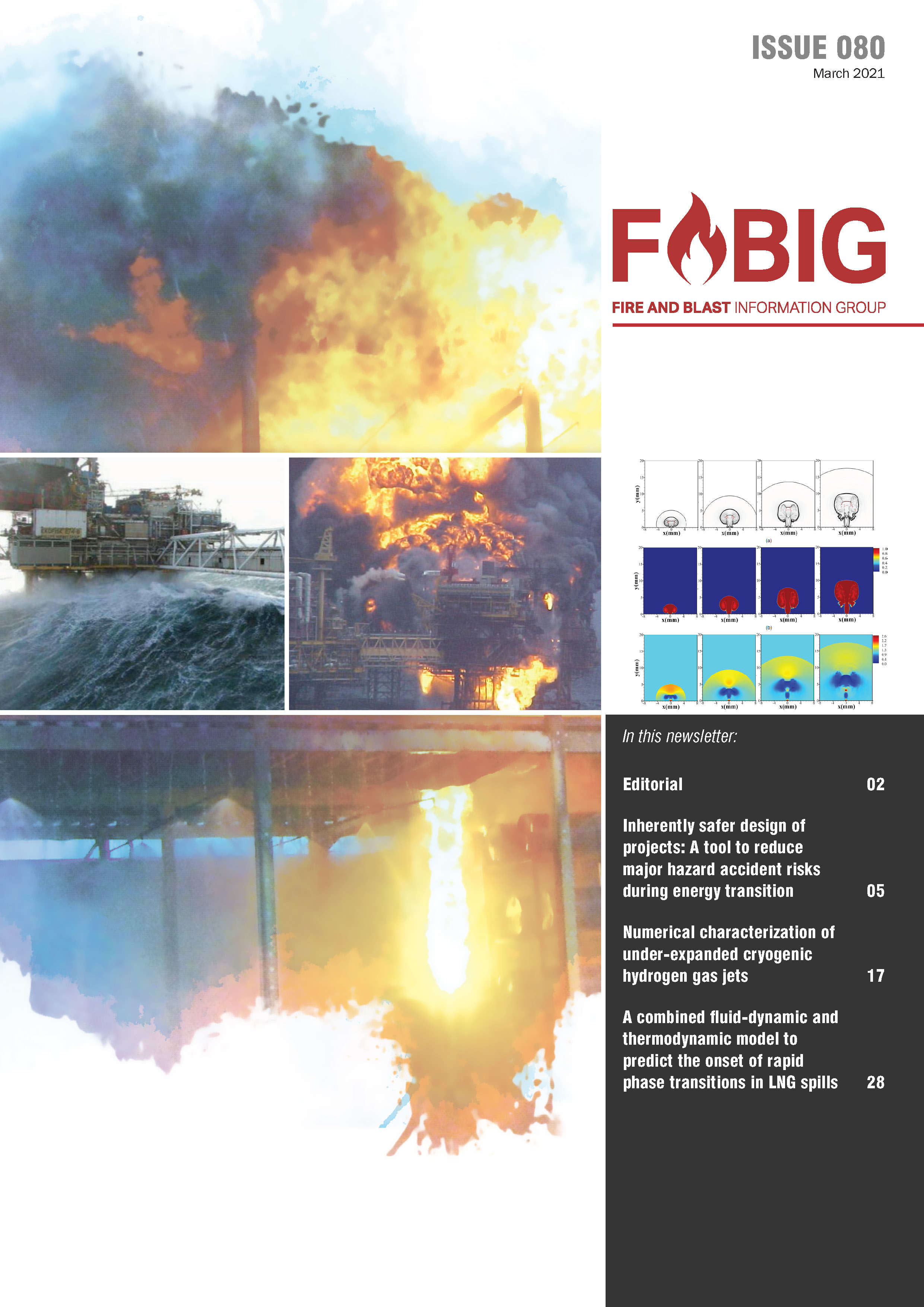Newsletter Issue 080

FABIG Members: Log-in to access all FABIG resources LOG IN
CONTENTS:
This FABIG Newsletter comprises the following:
- Editorial: 'Energy-in-Transition industries: An opportunity to have inherently safer and low risk industries'
V. Tam - FABIG Steering Committee Member - Inherently safer design of projects: A tool to reduce major hazards accident risks during energy transition
V. Tam - FABIG Steering Committee Member
This paper identifies areas that will improve the implementation of Inherently Safer Design (ISD) consistently throughout project life cycle. Firstly, the profile of human resources available to the project; secondly, the use of appropriate language to maximise stakeholder participation as ISD involves virtually all project members; thirdly, the clarity of ISD engineering goals and efficient deployment of resources to achieve those goals; and fourthly, the appropriate use of risk and hazard management at the various stages of projects. - Numerical characterization of under-expanded cryogenic hydrogen gas jets
Z. Ren, J. X. Wen - University of Warwick
This paper describes the analysis of the detailed near-field flow structures and transient physics of under-expanded cryogenic hydrogen jets, carried out for the first time using high-resolution Direct Numerical Simulations (DNS). The influence of nozzle pressure ratio and exit diameter have been analysed, and the predicted local liquefaction due to the complex wave interactions during jet evolution is also discussed. The presented study focused on the near-field under-expanded region to gain insight into the complex underlying physics. - A combined fluid-dynamic and thermodynamic model to predict the onset of rapid phase transition in LNG spills
K. Y. Lervåga, H. L. Skarsvåga, E. Aursanda,b, J. A. Ouassoua, M. Hammera, G. Reigstada, Å. Ervika, E. H. Fyhna,b, M. A. Gjennestada, P. Aursanda, Ø. Wilhelmsena,b - aSINTEF, bNTNU
This paper presents a multi-scale modelling approach for predicting delayed Rapid Phase Transition (RPT) and analytical expressions for the time and location of delayed RPT. The multi-scale model relies on the shallow-water equations to capture how LNG spreads on water and includes models for evaporation, heat-transfer, and a state-of-theart EoS. The Leidenfrost criterion is used to predict the onset of RPT. The analytical expressions are derived from an analysis of a continuous tank spill. The methodology for predicting the RPT time and position is general and applicable to any steady-state scenario.
Non-member price: £75.00
Add to Basket
Published in: March 2021
Keywords:
Inherently Safer Design / Energy transition / Under-expanded cryogenic hydrogen gas jets / Rapid phase transitions in LNG spills
Online purchase options:
Non-Members of FABIG are able to purchase PDF copies of the FABIG Newsletters.